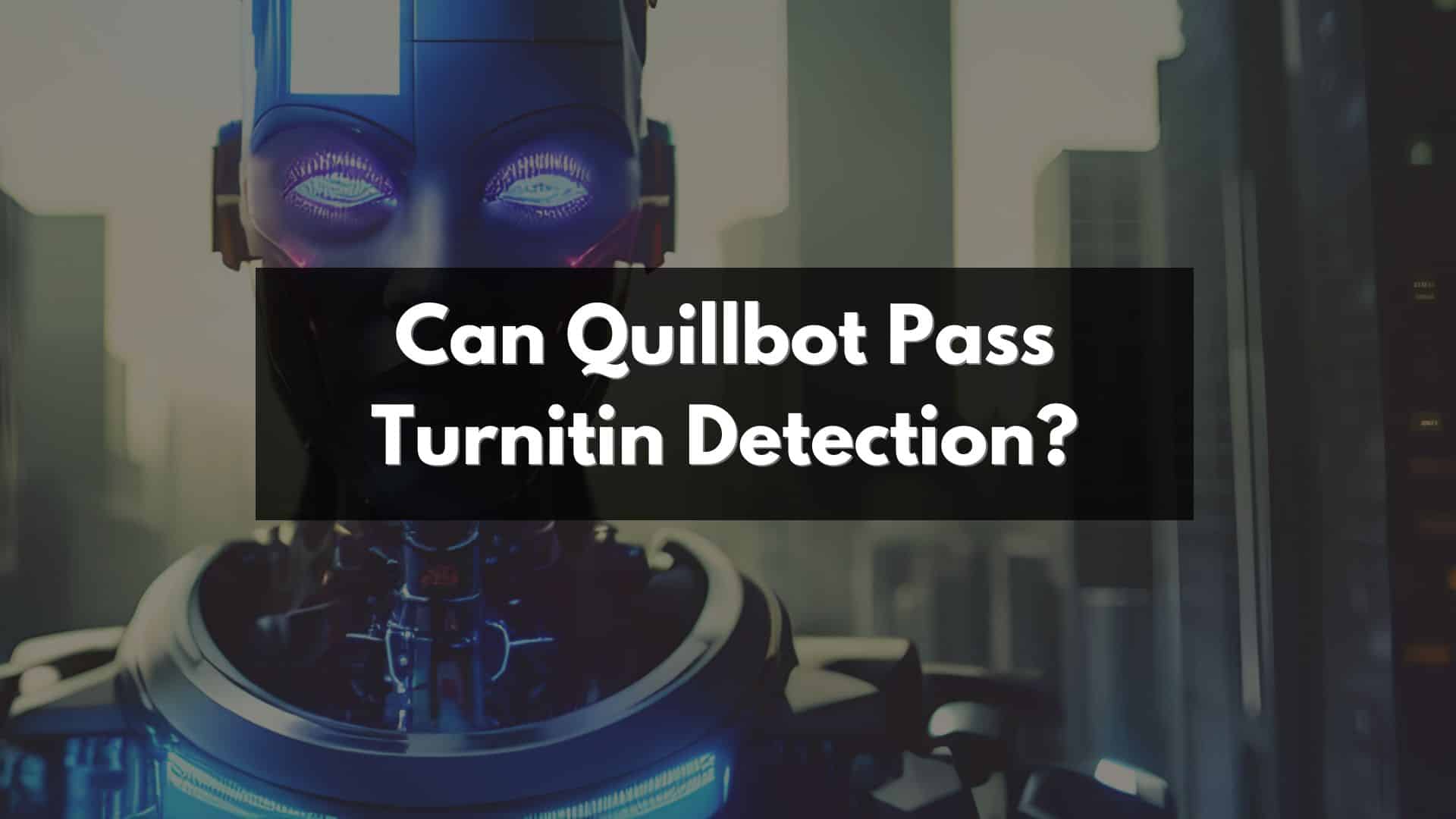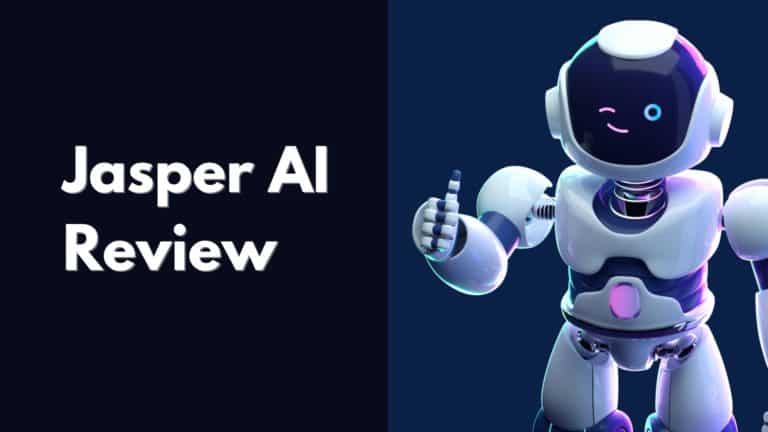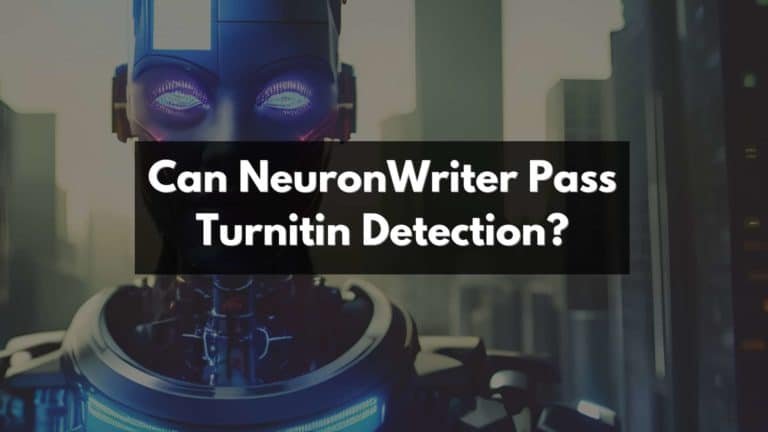Can Quillbot Pass Turnitin Detection?
Are you curious if a popular AI tool like Quillbot can outsmart plagiarism detection software such as Turnitin? You’re not alone. This article addresses a common concern among students and educators alike – the rise of AI in assignments and academic integrity.
Here, we’ll unravel whether Quillbot’s paraphrasing prowess can indeed bypass Turnitin’s intricate algorithms or not. Intrigued much? Let’s dive right in!
Key Takeaways
- Quillbot, an AI-powered paraphrasing tool, presents challenges for Turnitin’s plagiarism detection algorithms due to its sophisticated sentence structure manipulation and synonym replacement capabilities.
- While Turnitin has made advancements in identifying unique patterns associated with Quillbot – generated content, it still struggles with pinpointing characteristics of such paraphrased text reliably.
- The accuracy rate of detecting Quillbot paraphrased content by Turnitin is approximately 94.66%, according to the AI detector at Originality.AI.
- Students should prioritize academic integrity by exploring alternative writing tools or manual paraphrasing techniques rather than solely relying on AI-based software like Quillbot.
Understanding Quillbot and Turnitin
Turnitin and QuillBot are two noteworthy tools in the realm of writing, each having unique functions. Turnitin stands as an academic integrity software, largely utilized by professors to ensure that the content submitted by students is original.
It employs advanced algorithms to scan for exact grammatical patterns, word or phrase matches and even similar sentence structures from its vast database.
On the other hand, Quillbot serves as a useful AI-powered paraphrasing tool. It aids users in rewording their text while maintaining the central idea intact. The functionality of Quillbot revolves around rewriting sentences using a rich repository of synonyms and related terms while manipulating sentence structure effectively.
Despite these distinct roles, questions have risen on platforms like Reddit about whether Turnitin’s sophisticated plagiarism detection mechanics can catch content paraphrased with QuillBot – this is where our exploration begins.
How Turnitin Detects Paraphrasing
Turnitin detects paraphrasing by analyzing factors such as grammar patterns, phrase matching, and word matching in the submitted text.
Factors that impact detection
Contemplating the multiple factors that impact Turnitin’s ability to detect paraphrasing is crucial to understanding its functionality. These aspects include:
- Similarity Detection: Turnitin has robust algorithms designed to find exact matching words or phrases in their vast databases of academic papers, journals, and websites.
- Grammar Analysis: The software also studies grammatical patterns and structures in text submissions. For instance, it can identify unique patterns and characteristics of QuillBot paraphrased content using advanced technology.
- Phrase Matching: Another key feature employed by Turnitin is phrase matching where the software checks for phrases that are identical or very similar to those found in their database.
- Database Referencing: The more extensive the database used by a plagiarism detection tool, the greater its ability to identify plagiarized content. Turnitin boasts an enormous database which increases its chances of detecting matches.
- AI Writing Detection: With recent advancements in technology, some tools like Originality.AI can now determine with 94.66% accuracy if content has been paraphrased using QuillBot.
Can Turnitin Detect Quillbot Paraphrasing?
Turnitin’s algorithms primarily focus on identifying similar grammatical patterns and phrases, making it challenging for the software to detect Quillbot paraphrasing.
Limitations of Turnitin in detecting Quillbot paraphrasing
Academic integrity and originality check software such as Turnitin do face challenges when attempting to detect Quillbot’s paraphrasing. Here are some limitations:
- Turnitin algorithms focus on finding similar grammatical patterns and phrases. This means they often overlook the sophisticated rephrasing that a tool like Quillbot can produce.
- While Turnitin has developed advanced technology to identify unique patterns in text, it still struggles to pinpoint characteristics of Quillbot-produced content reliably.
- The current detection system in place at Turnitin can’t differentiate between manually rewritten text and AI-generated text rewrites, making it harder for them to spot work that has been spun through Quillbot.
- Even though improvements have been made with its algorithms, the accuracy rate of detecting Quillbot paraphrased content is not 100%. According to Originality.AI, an AI detector, the accuracy sits around 94.66%.
- A crucial limitation revolves around the vast database of academic papers and essays from which Turnitin draws comparisons. Yet, since Quillbot’s output doesn’t originate from these databases but generates on-the-spot word variations using AI, traditional similarity detection might not be effective.
- Lastly, the tech – savvy students could use multiple passes through Quillbot or other paraphrasing tools resulting in a significant alteration in texts that makes it difficult for any plagiarism detection tool including Turnitin to recognize.
Features and Functionality of Quillbot
Quillbot offers various features and functionalities that make it a powerful paraphrasing tool. It uses advanced algorithms to generate high-quality paraphrased content, ensuring clarity and coherence.
Discover how Quillbot can help you improve your writing!
How Quillbot generates paraphrased content
Quillbot is an advanced AI-driven paraphrasing tool that utilizes a combination of algorithms and natural language processing to generate high-quality paraphrased content. It takes the original text as input and then analyzes the structure, grammar patterns, and meaning of the text.
Using its vast database of phrases, synonyms, and related terms, Quillbot suggests alternative words and sentence structures to create unique variations while maintaining the original context.
This process helps users to avoid plagiarism by providing them with paraphrased content that is distinct from the original source while still conveying the same message in their own words.
Tips to Avoid Detection by Turnitin
To avoid detection by Turnitin, use credible and acceptable text sources, manipulate sentence structure, and incorporate synonyms and related terms.
Using acceptable text sources
To avoid detection by Turnitin, it is important to use acceptable text sources when paraphrasing. This means ensuring that the content you are using as a reference is from reputable and credible sources, such as academic journals or reliable websites.
By using these sources, you can provide originality to your work while still incorporating relevant information. It is crucial to properly cite and reference these sources in your writing to maintain academic integrity and avoid any accusations of plagiarism.
Manipulating sentence structure
Manipulating sentence structure is a clever technique to evade detection by Turnitin. By changing the order of words or phrases, using different tenses, or altering the overall structure of sentences, you can make your writing appear original and unique.
Turnitin’s algorithms focus primarily on identifying similar grammatical patterns and phrases, so by manipulating sentence structure, you can avoid direct matches with existing content in its database.
This technique allows you to paraphrase effectively while minimizing the risk of being flagged for plagiarism.
Incorporating synonyms and related terms
To avoid detection by Turnitin, one strategy is to incorporate synonyms and related terms when paraphrasing content using Quillbot. By replacing certain words or phrases with their equivalent alternatives, it becomes less likely for the software to flag the content as plagiarized.
This is because Turnitin’s algorithms primarily focus on identifying matching phrases and grammatical patterns rather than detecting paraphrasing itself. By utilizing a wide range of synonyms and related terms, writers can create unique variations of the original text that are less likely to be flagged by Turnitin’s similarity detection system.
However, it is important to note that while incorporating synonyms can help evade detection, it does not guarantee foolproof plagiarism avoidance.
Can Quillbot Pass Turnitin Detection?
Turnitin has improved its algorithms to detect Quillbot paraphrasing with 94.66% accuracy, making it difficult for students to cheat the plagiarism checker. Find out how Turnitin identifies unique patterns in Quillbot content and learn about alternatives to avoid detection.
Read more to understand the implications of using these tools in academic settings.
Examining the effectiveness of Quillbot in evading detection
Quillbot, a popular paraphrasing tool that utilizes artificial intelligence, has been the subject of debate when it comes to evading detection by Turnitin. While some claim that Quillbot can bypass Turnitin’s plagiarism detection, others argue otherwise.
The effectiveness of Quillbot in evading detection largely depends on the sophistication of Turnitin’s algorithms and updates.
It is important to note that Turnitin focuses on identifying similar grammatical patterns and phrases rather than specifically detecting paraphrasing. However, there have been claims that with its advanced technology, Turnitin has improved its ability to identify unique characteristics and patterns associated with content generated by Quillbot.
In fact, the AI detector at Originality.ai boasts an accuracy rate of 94.66% in detecting QuillBot-paraphrased content.
Despite these claims, it is crucial for students to understand the ethical considerations and potential consequences of attempting to cheat or deceive plagiarism detection systems like Turnitin.
Academic integrity should always be prioritized when using any writing assistance tool or software like Quillbot to avoid jeopardizing educational goals and future opportunities.
Implications of Using Quillbot and Turnitin
Using Quillbot and Turnitin can have significant implications for academic integrity and ethical considerations. Students who rely heavily on Quillbot to paraphrase their work may be tempted to submit content that is not entirely their own, leading to potential consequences such as plagiarism penalties or damage to their academic reputation.
Additionally, the use of Turnitin as a plagiarism detection tool emphasizes the importance of originality in academic writing and discourages cheating or unethical practices. It is crucial for students to understand the implications of relying on these tools and adhere to proper citation guidelines to maintain academic integrity.
Academic integrity and ethical considerations
Maintaining academic integrity and abiding by ethical standards are crucial considerations for students. When using tools like Quillbot or any other AI-based writing assistance, it is essential to understand the potential pitfalls that they may present.
Plagiarism detection software, such as Turnitin, aims to ensure originality in academic work and prevent cheating. By relying on these tools to paraphrase content without proper citations or attribution, students risk compromising their academic integrity.
Cheating and plagiarism not only undermine the learning process but also have serious consequences. Academic institutions take a firm stance against dishonesty and often impose severe penalties for those found guilty of plagiarism.
It is important for students to understand that using Quillbot or similar tools to evade detection by Turnitin can be considered a breach of academic honesty. Instead, students should focus on developing their own writing skills, practicing paraphrasing techniques manually, citing sources accurately, and seeking guidance from instructors when needed.
Potential consequences of using Quillbot in academic settings
Using Quillbot in academic settings can have serious consequences. The primary concern is the risk of plagiarism. While Turnitin may not currently detect Quillbot paraphrasing, it’s important to remember that cheating undermines academic integrity.
If students rely on Quillbot to generate their assignments, they are essentially using someone else’s words without proper credit or understanding of the content. This not only diminishes their own learning experience but also goes against ethical standards and can result in severe penalties such as failing grades, academic probation, or even expulsion from educational institutions.
Therefore, it is crucial for students to prioritize originality and critical thinking rather than resorting to shortcuts like Quillbot. Engaging with the material and expressing one’s unique thoughts and ideas ultimately leads to personal growth and success in academia while maintaining the value of honesty and authenticity.
Alternatives to Quillbot and Turnitin
Other AI-based writing tools and manual paraphrasing techniques are viable alternatives to Quillbot and Turnitin.
Other AI-based writing tools
There are several other AI-based writing tools available that can assist with paraphrasing and generating original content. These tools offer similar functionalities to Quillbot and can be used as alternatives to Turnitin. Some of these AI-based writing tools include:
- Grammarly: Grammarly is a popular writing assistant that not only checks for grammar and spelling errors but also provides suggestions for sentence rephrasing. It can help users avoid plagiarism by offering alternative wording options.
- ProWritingAid: ProWritingAid is an AI-powered writing tool that offers comprehensive grammar, style, and plagiarism checking. It can detect similarities in content and provide suggestions for rewriting sentences to improve originality.
- WordAi: WordAi is an AI-based article spinner that uses advanced algorithms to generate human-like rewritten content. It can help users create unique articles by automatically paraphrasing text.
- Spinbot: Spinbot is another online paraphrasing tool that uses artificial intelligence to rewrite text while maintaining the overall meaning. It offers an easy-to-use interface and allows users to generate multiple versions of their content.
- Article Forge: Article Forge is an AI writing software that can automatically generate high-quality articles on any given topic. It uses artificial intelligence algorithms to research, write, and paraphrase content based on user input.
Manual paraphrasing techniques
Manual paraphrasing techniques involve rephrasing content without the use of automated tools or software. These techniques are often used by writers and students who want to ensure that their work is original and avoids plagiarism. Here are some manual paraphrasing techniques:
- Read and understand the original text: Before attempting to paraphrase, it is important to thoroughly read and comprehend the original text. This will help you grasp the main ideas and concepts.
- Use your own words: When paraphrasing, make sure to express the ideas using your own words. Avoid directly copying phrases or sentences from the source material as this would still be considered plagiarism.
- Change sentence structure: One way to paraphrase effectively is by rearranging the sentence structure of the original text. This involves changing the order of words, using different sentence types (such as switching from a declarative sentence to a question), or breaking down complex sentences into simpler ones.
- Incorporate synonyms and related terms: Another technique is to replace words with synonyms or related terms. This helps add variety to your writing while still conveying the same meaning as the original text.
- Focus on expressing ideas rather than details: Instead of trying to replicate every detail of the original text, focus on capturing and expressing its main ideas in your own words.
- Summarize and condense information: Paraphrasing often involves summarizing lengthy passages or condensing information into shorter sentences or paragraphs while maintaining the essence of the original text.
- Check for accuracy and clarity: After paraphrasing, it is crucial to review your work for accuracy and clarity. Ensure that you have retained the intended meaning of the original text while avoiding any unintentional misinterpretations.
Conclusion
In conclusion, while there have been debates on whether Quillbot can pass Turnitin detection, the current consensus is that Turnitin has improved its algorithms to identify content generated by Quillbot.
While Quillbot may still be able to evade detection in some cases, it is not a foolproof method to bypass plagiarism checks. It is essential for students and writers to prioritize academic integrity and explore alternative writing tools or manual paraphrasing techniques instead of relying solely on AI-based software like Quillbot.
FAQs
Can Quillbot pass Turnitin detection?
No, Quillbot cannot pass Turnitin detection. Turnitin is a plagiarism detection software that thoroughly checks written content for any instances of copied or paraphrased material from various online sources. Quillbot’s purpose is to assist users in generating unique content but it does not guarantee that the generated text will be undetectable by plagiarism checkers like Turnitin.
Does using Quillbot guarantee originality in my writing?
While using Quillbot can help you generate unique content by rephrasing existing text, it is important to remember that the responsibility of ensuring originality still lies with the writer. It is recommended to review and edit the output provided by Quillbot to ensure its accuracy and originality before submitting any work.
Are there any limitations to rely solely on Quillbot for creating plagiarism-free content?
Yes, relying solely on Quillbot may have some limitations when it comes to creating completely plagiarism-free content. The tool uses machine learning algorithms and may not always produce flawless results, especially when it comes to complex topics or specific writing requirements. To ensure authenticity, conducting proper research and incorporating personal knowledge are crucial steps in producing high-quality and original written work.
Is it ethical to use tools like QuillBot for academic purposes?
The ethical use of tools like QuillBot depends on how they are utilized. While these tools can aid writers in improving their writing skills and overcoming creative obstacles, they should never be used as a means of plagiarizing someone else’s work intentionally or attempting to deceive others about the origin of one’s own ideas or expressions.







